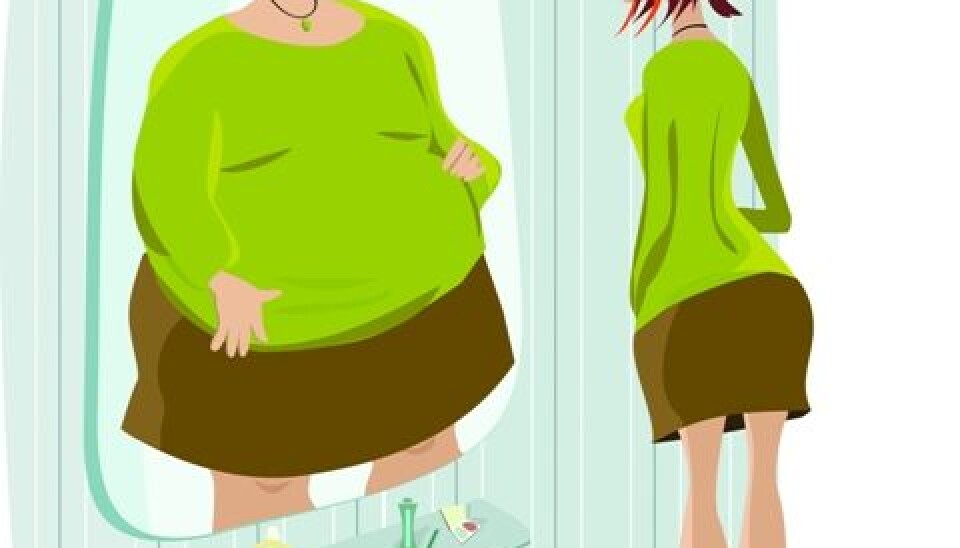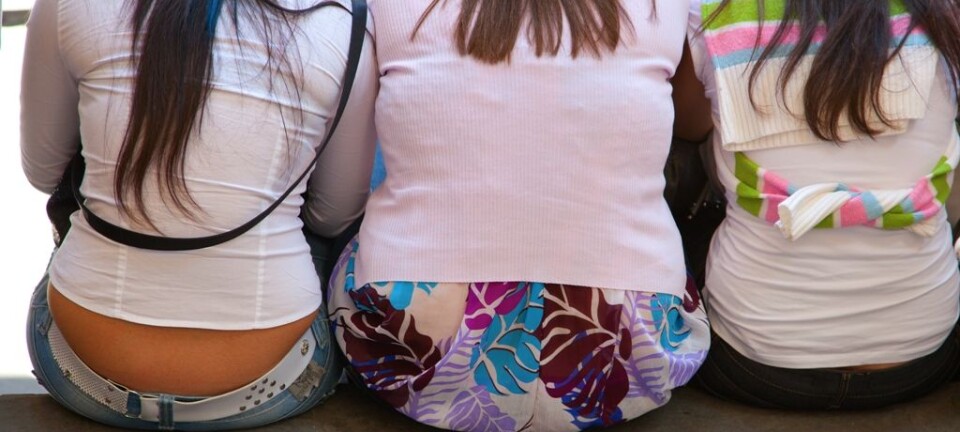An article from Norwegian SciTech News at NTNU

Feeling overweight could make you fat
Teenagers who feel fat even though they are not, are more likely to become obese as adults.
Denne artikkelen er over ti år gammel og kan inneholde utdatert informasjon.
They’re everywhere - in magazines, on the Internet, on television - people with super-thin bodies who are presented as having the ideal body form.
But despite the increasing pressure to be thin, more and more of us are overweight. Researchers from the Norwegian University of Science and Technology (NTNU) have identified a trend where normal weight teens who have certain perceptions of their body types grow up to be obese adults.
“Perceiving themselves as fat even though they are not may actually cause normal weight children to become obese as adults,” says Koenraad Cuypers, a researcher at NTNU.
Cuypers and his colleagues at the Department of Community Medicine have looked at data from the Nord-Trøndelag Health Study (HUNT) to examine the obesity problem from a new angle: This is the first study to look at the relationship between perceived weights and actual weights in a longitudinal perspective that extends from teenagers to adults.
A perpetual struggle for the ideal body
There are likely many different, and complex, explanations for why thinking you are fat – even if you are not – may lead you to become fat.
One explanation may be related to psychosocial stress, which can be associated with putting on weight around the waist. Thus, the psychosocial stress related to having (or not having) an ideal body type, along with the perception of oneself as overweight, can result in weight gain.
“Another explanation may be that young people who see themselves as fat, often change their eating habits by skipping meals, for example. Research has shown that dropping breakfast can lead to obesity,” says Cuypers .
Additionally, following a diet that you cannot maintain over time will also be counterproductive, since the body strives to maintain the weight you had before you started the diet.
The researchers checked whether exercise made a difference in the relationship between perceived and actual overweight. But they found that exercise could not compensate for the negative effect of feeling overweight at a young age.
Higher BMI, larger waist circumference
Young HUNT1 was conducted from 1995-1997. The health survey included 1196 normal weight teenagers of both sexes who were later followed up in the third HUNT study, from 2006-2008, when participants had grown to be between 24 and 30 years old.
Half of them were still normal weight as adults. But among those who were obese, the researchers found a clear difference:
The data show that 59 percent of the girls who had felt fat as a teen, became obese in adulthood, as measured by using body mass index, or BMI. If waist circumference was used as the measurement of obesity, then the percentage of teens who perceived themselves as fat and then later became fat was as high as 78 percent.
Among the girls who had considered themselves as fat during adolescence, was in follow-up study, 31 percent obese by BMI scale, and 55 percent as measured by waist circumference.
Similar studies have been done earlier among normal weight adult men and women. Here, too, increased the weight of those who saw themselves as too fat.
Simple measures of normal weight
The study shows that more normal weight girls than boys rated themselves as overweight: 22 percent of girls and nine percent of the boys saw themselves as thick at the first survey.
One explanation for this gender difference may be that the media's focus on looks is increasingly targeting girls than against boys.
Cuypers thinks that girls are experiencing thus more psychosocial stress to achieve the ideal body.
Therefore he suggests that the community needs to move away from the focus on weight, and instead emphasize healthy habits like eating regularly and with variation, and eating breakfast. Good sleeping habits are also an advantage to avoid social jetlag.
By facilitating the youth to a lesser extent of getting transported to and from school and leisure activities, could also help avoid "commute-belly".
Such measures will provide better health and will also be able to help those young people who have the opposite problem: that is feeling normal weight even if they are overweight. For they are also available.
Out with the models!
Cuypers believe that the relationship between perceived obesity and the development of obesity is something the school system and the rest of society must address in order to reverse the trend and reduce the weight in society.
"Weight norms of society must be corrected so that young people have a more realistic view of what is normal. In school you should talk to kids about what is normal body shapes, and show that all bodies are beautiful as they are. And, not the least: The media must cease to emphasise the model body as the perfect ideal. It is not!" concludes Cuypers.
-----------------------------------------
Read this article in Norwegian at forskning.no
Translated by: Nancy Reney Bazilchuk

































